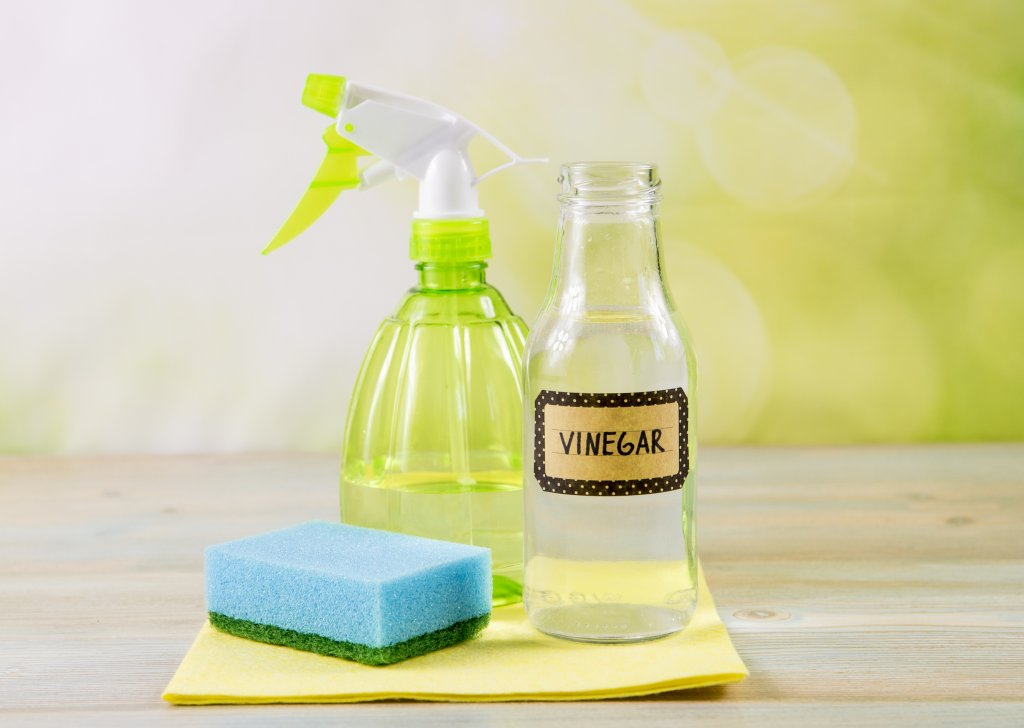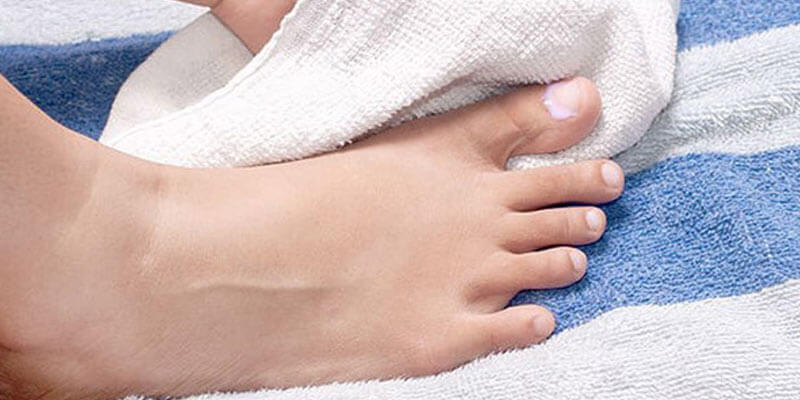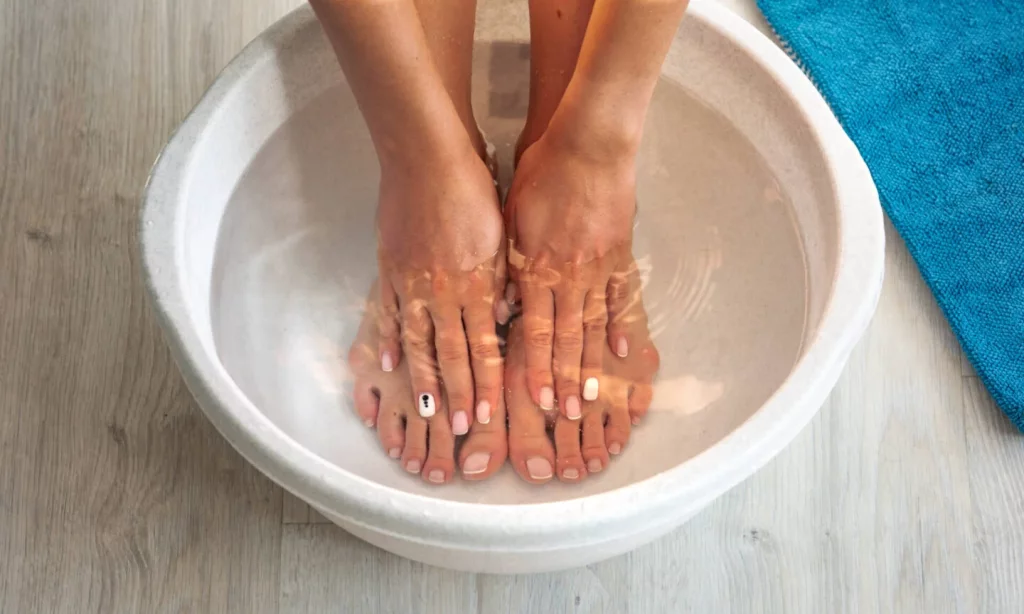Toenail fungus, medically known as onychomycosis, is a common and stubborn problem affecting millions worldwide.
It can be both unsightly and uncomfortable. It causes thickened, discolored nails and, in some cases, also causes pain.
Different kinds of fungi, like dermatophytes, yeats, and molds, are responsible for causing this infection. It does not look nice.
It usually begins at the tip or the bottom of the nail and then slowly spreads, making the nail thicker, changing its color, making it brittle, and sometimes causing a bad smell.
While various treatment options are available, some people seek natural remedies like white vinegar as an alternative to pharmaceutical treatments.
Before diving into this content, read our previous blog to understand how it all started.
Our previous blog on how to get rid of white fungus on plants provides essential context to this topic.
In this blog, we will explore whether vinegar can effectively kill toenail fungus and how to use it in easy-to-understand terms.
What is Toenail Fungus?

Toenail fungus is typically caused by dermatophyte fungi, which thrive mostly in warm and moist environments. These fungi can easily penetrate the nail, leading to infection. Common risk factors for toenails include:
- Poor Foot Hygiene- Failing to keep your feet clean and dry.
- Wearing tight or non-breathable shoes- Shoes that don’t allow proper ventilation can trap moisture.
- Nail Injuries- Stabbed toe or nail biting can provide an entry point for fungi.
- Weakened Immune System- A compromised immune system can make fighting fungal infections more difficult for your body.
- Age- Older individuals are more prone to fungus due to slower nail growth and decreased blood circulation.
Can White Vinegar Kill Toenail Fungus?
White vinegar is believed to treat toenail fungus. White vinegar is known for its acidic properties. Vinegar also has some antifungal effects. Benefits of white vinegar to kill toenail fungus:
1. Acidic Environment– Fungi tend to thrive in alkaline environments. White vinegar, being acidic, can create an environment that is less favorable for fungal growth.
2. Mild Antifungal Properties– Vinegar has some mild antifungal properties, which can inhibit the growth of certain types of fungi.
3. Enhancing Nail Health– Regular use of vinegar soaks may help improve the overall health of your nails, making them less susceptible to fungal infections.
How to Use White Vinegar for Toenail Fungus
Before attempting any home remedy, it is essential to consult with a healthcare professional, especially if you have underlying medical conditions or are taking medications. White vinegar is generally considered to be safe for topical use. But it may not be suitable for everyone.
Check out the step-by-step guide on how to use white vinegar to cure toenail fungus.
1. Prepare Your Foot

Clean your affected toenails and the surrounding area with soap and water. After that, pat your foot dry with a towel.
2. Vinegar Solution

Fill a basin or bowl with warm water. Add an equal amount of white vinegar to the water.
For example, if you use one cup of water, add one cup of white vinegar. You want enough solution to submerge your affected foot.
3. Soak Your Foot

Submerge your affected foot in the vinegar solution. Ensure that the toenails with fungus are fully immersed. Soak for about 15-20 minutes.
4. Dry Your Foot

After soaking, gently pat your foot dry with a towel.
5. Repeat as Needed

You can repeat this process daily or a few times a week for several weeks to see if there is any improvement. Patience is important, as toenail fungus can take a long time to clear up.
6. Monitor Progress

You should keep an eye on your toenails to see if there is any improvement in their appearance over time. Consult a healthcare professional if you don’t notice any changes or if the condition worsens.
Tips and Precautions for Toenail Fungus
While white vinegar can be a safe and cost-effective option for toenail fungus, following these tips and precautions is essential.
1. Consistency is Key
Treating toenail fungus can take time. So, it would help if you were consistent with your vinegar foot soaks. Regularly soaking your foot in the vinegar helps maintain the acidic environment that can inhibit fungal growth.
2. Trim Nails
Trim your infected nails regularly to reduce their thickness and improve the effectiveness of the vinegar treatment. Keeping your nails well-maintained creates a more favorable environment for the vinegar to penetrate and address the fungal infection effectively.
3. Good Foot Hygiene
Maintain good foot hygiene by keeping your feet clean and dry daily. Change socks daily and wear breathable shoes. These simple practices create an environment less conducive to fungal growth and contribute to the overall health of your feet.
4. Consult a Professional
Consult a healthcare professional if your toenail fungus persists or worsens despite home treatment. They may recommend prescription antifungal medications or other treatments. They have the expertise to evaluate your condition and may suggest prescription antifungal medicines or alternative treatments as they provide effective solutions to address your specific situation.
5. Avoid Irritation
Discontinue the vinegar soak if it causes irritation, redness, or adverse fractions. Some individuals may be more sensitive to vinegar. Your comfort and safety should always come first in any home remedy. So, if you encounter any discomfort, discontinue the treatment and consider alternate options for managing toenail fungus.
6. Prevent Recontamination
To prevent recontamination, disinfect your shoes regularly and avoid walking barefoot in public places, especially where fungi may thrive. This precaution will help minimize the chances of reinfection and ensure that your efforts to combat toenail fungus are not in vain.
Conclusion
White vinegar can be valuable to your toenail fungus treatment regimen thanks to its acidic properties and mild antifungal effects.
However, it is essential to approach this remedy with patience and realistic expectations.
Toenail fungus can be challenging to eliminate, and individual results may vary.
Remember that while white vinegar may help manage toenail fungus, it may not work for everyone, and it should not replace professional medical advice or prescribed treatments.
If you are dealing with persistent toenail fungus, consult a healthcare professional for a comprehensive assessment and personalized treatment plan.
Your journey to healthier toenails starts with informed choices and consistent care.

